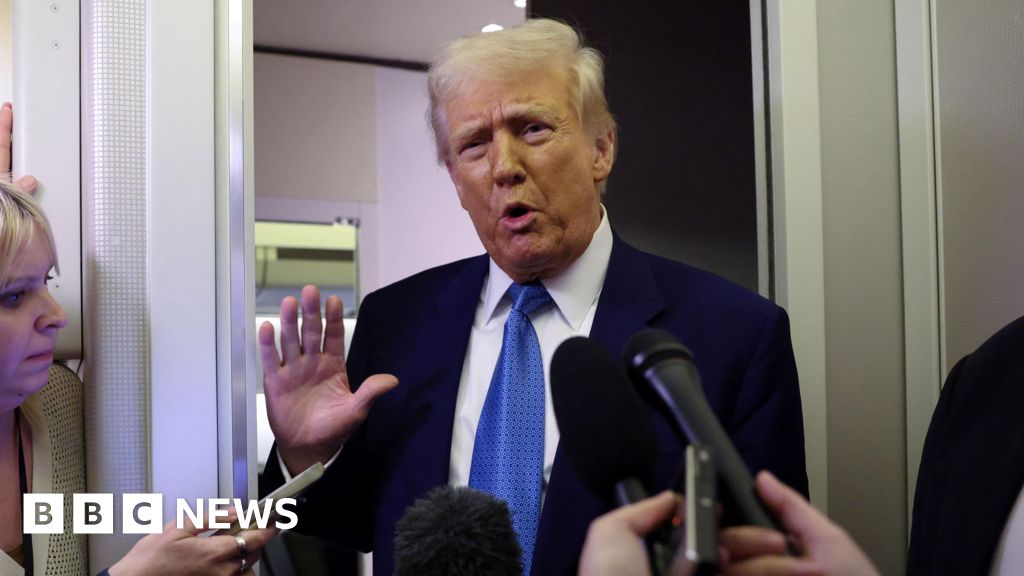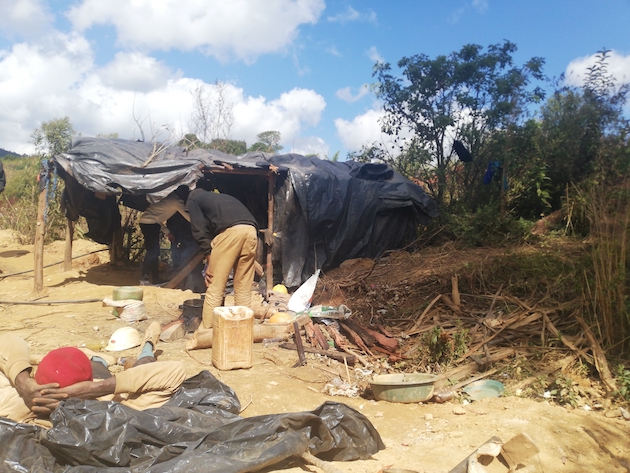Biden makes surprise trip to Ukraine ahead of Russian invasion anniversary
Biden was spotted with the Ukrainian leader outside St. Michael’s Golden-Domed Monastery shortly before noon local time, his appearance capping hours of speculation during an intense security lockdown that had blocked car traffic and even pedestrians from parts of central Kyiv.
Following talks with Zelensky and a visit to the U.S. Embassy, Biden departed Kyiv several hours later, according to a reporter traveling with him. Biden’s visit, however brief, represented one of the most remarkable presidential trips in modern history, sending him into a country at war and a city under regular bombardment without the heavy U.S. military presence that provided a protective shield during previous stops in Iraq or Afghanistan.
Biden’s national security adviser, Jake Sullivan, told reporters that the White House had notified Moscow in advance of Biden’s travel “for deconfliction purposes.”
In his remarks alongside Zelensky, Biden said the United States would provide another half-billion dollars of assistance to Ukraine. Biden has insisted that Washington will back Ukraine against Russia for “as long as it takes” despite flagging support among the American public and no near-term prospect of peace talks.
Biden’s administration has provided some $30 billion in security aid since President Vladimir Putin sent Russian forces into Ukraine on Feb. 24, 2022, initiating the largest ground war in Europe since World War II — one that has cost his country and Ukraine hundreds of thousands of casualties.
Under Biden’s leadership, the United States and its NATO allies have gradually expanded the array of weaponry they have pledged to include heavy tanks, but Ukrainian leaders continue to press for more sophisticated weapons as the combatants prepare for renewed offensives this spring.
Biden said his visit was intended to reaffirm American backing for Ukraine’s sovereignty and territorial integrity, which Russia has violated since 2014, when Putin annexed Ukraine’s Crimean Peninsula and launched support for a separatist campaign in the eastern Donbas region.
Photos showed Biden and Zelensky embracing in front a wall where photos of killed Ukrainian soldiers were displayed.
The White House has attempted to cast the deepening conflict as a high-stakes battle that will determine not only Ukraine’s fate, but also that of democracies and the rule of law everywhere, arguing that if Putin is permitted to seize parts of another nation by force, it will give a green light to other autocrats.
“When Putin launched his invasion nearly one year ago, he thought Ukraine was weak and the West was divided. He thought he could outlast us,” Biden said in a statement issued by the White House after his arrival. “But he was dead wrong.”
Video later showed the president, wearing a dark suit and, in an apparent nod to the Ukrainian flag, a blue-and yellow striped tie, seated with Zelensky, who wore his trademark military-style attire.
The visit represented a major boost for Zelensky, whose domestic support has soared in line with national unity and anti-Russian fury since Putin’s invasion.
As a wartime leader, Zelensky now faces the formidable task of propelling Ukraine’s fatigued military into Russian-occupied territory while also persuading foreign partners to provide ever greater military support, including fighter jets. U.S. officials have so far declined to provide aircraft to Ukraine.
Biden’s trip comes as questions abound about the longevity of global backing for Ukraine and the cohesion of the U.S.-led coalition that has enabled Kyiv’s military success so far. A top U.S. official said in recent days that China was actively considering sending military aid to Russia.
While Western nations continue to proclaim strong support, many have grown worried about the economic and political costs of a protracted conflict — and about their ability to keep the money and munitions flowing.
Opinion polls show that Americans are growing weary of the aid effort, mirroring complaints across the globe about billions going to Ukraine instead of other priorities. In recent weeks, the White House has told Kyiv that it could soon see limits in support from the United States and other countries.
The giant aid packages that America has sent to Ukraine to date were approved under a Democratic-controlled Congress. Republicans retook the House in November, and a vocal right-wing minority in the GOP has threatened to curtail support.
Biden’s trip was shrouded in secrecy and, on the ground in Kyiv, involved even greater security than other high-level visits. Biden had been due to leave for an announced visit to Poland from Washington on Monday evening but, according to a small group of reporters who traveled with Biden to Kyiv, he secretly departed Washington around 4 a.m. Sunday instead.
Journalists accompanying Biden agreed to withhold real-time details of the president’s movements until he departed, including information about how he arrived in the Ukrainian capital. The country’s airspace has been closed for the past year.
While other world leaders have visited Kyiv to meet with Zelensky and tour the war-scarred city over the past year, Biden has stayed away because of security concerns and wariness about the possibility of a conflict between the world’s two largest nuclear powers. He has sent senior aides including Secretary of State Antony Blinken and Defense Secretary Lloyd Austin in his place, and the first lady, Jill Biden, made a surprise visit to western Ukraine on Mother’s Day.
In contrast, Britain’s Boris Johnson visited Kyiv three times as prime minister in the months following the invasion.
A journalist traveling with Biden reported around 2 p.m. local time that the president had left Kyiv. No further details about his travel were immediately available.
In a call with reporters after Biden’s departure from Kyiv, White House officials described the trip was “bold” and “risky,” and said it was the product of months of planning.
They said the arrangements — and the central question of whether Biden could safely get to Kyiv and back — were made more challenging by the lack of an official U.S. military presence in Ukraine. While there is a small defense liaison office at the U.S. Embassy, Biden has promised to keep American troops out of the war.
The interest in the president’s travel gave the White House an opportunity to refute Kremlin propaganda about how Russia is actually fighting a proxy war with the United States and NATO.
“This was a historic visit unprecedented in modern times, to have the president of the United States visit the capital of a country at war where the U.S. military doesn’t control the critical infrastructure,” Sullivan said.
Biden’s visit occurs against the backdrop of the most intense acrimony between Washington and Moscow in decades. A U.S.-led campaign of economic sanctions and political isolation has taken a toll on Russia’s economy and left Putin with few global allies.
Officials said the traveling party was smaller than the entourage that usually accompanies the American president overseas. It included a handful of Biden’s closest aides, a medical team, and security staff.
While planning took place over several months, Biden made a final decision to go ahead on Friday.
During the visit, Biden and Zelensky held private talks at the Mariinsky Palace, a ceremonial baroque structure overlooking the Dnieper River in central Kyiv.
Zelensky said the discussion “brings us closer to victory,” according to a White House pool report. He noted that long-range missiles that the United States has not previously provided to Ukraine were now under discussion. The present moment, he added, was a “clear signal that Russia’s attempts of relaunch will have no chance.”
In Kyiv, the two leaders reminisced about the opening moments of Russia’s full-scale invasion, nearly a year ago on the night of Feb. 24. Zelensky said his first call as the invasion began, after months of White House warnings, was to Washington.
“You told me that you could hear explosions in the background,” Biden said in response. “I’ll never forget that.”
Biden said he had asked Zelensky that night how he could be of help and twice repeated what he said was the Ukrainian leader’s response: “Gather the leaders of the world. Ask them to support Ukraine.”
“You said that you didn’t know when we’d be able to speak again. That dark night one year ago, the world was literally at the time bracing for the fall of Kyiv,” Biden continued. “Perhaps even the end of Ukraine.”
“One year later, Kyiv stands. And Ukraine stands. Democracy stands,” he said. “The Americans stand with you, and the world stands with you.”
Biden also made a stop at the U.S. Embassy in Kyiv, which was closed for several months after Russia’s invasion and now operates with a reduced footprint.
Biden is next expected to travel to Poland, where he is expected to deliver a speech Tuesday and to meet with President Andrzej Duda and leaders of the Bucharest Nine, a group of mostly former Eastern bloc nations that formed after Russia annexed Crimea in 2014. Countries in that group are especially wary of Moscow’s expansionist aspirations.
Viser and Woodson reported from Warsaw. Kostiantyn Khudov contributed to this report.
Check out our Latest News and Follow us at Facebook
Original Source







